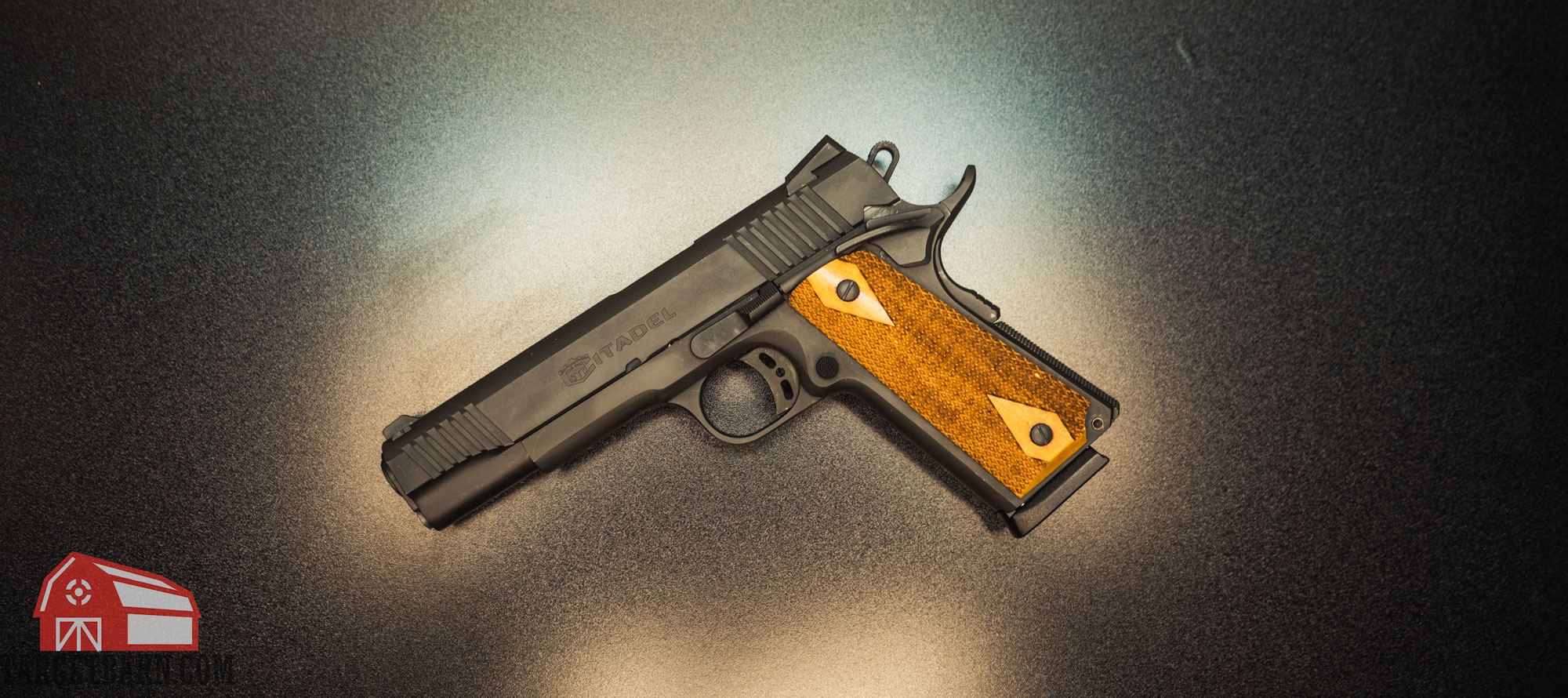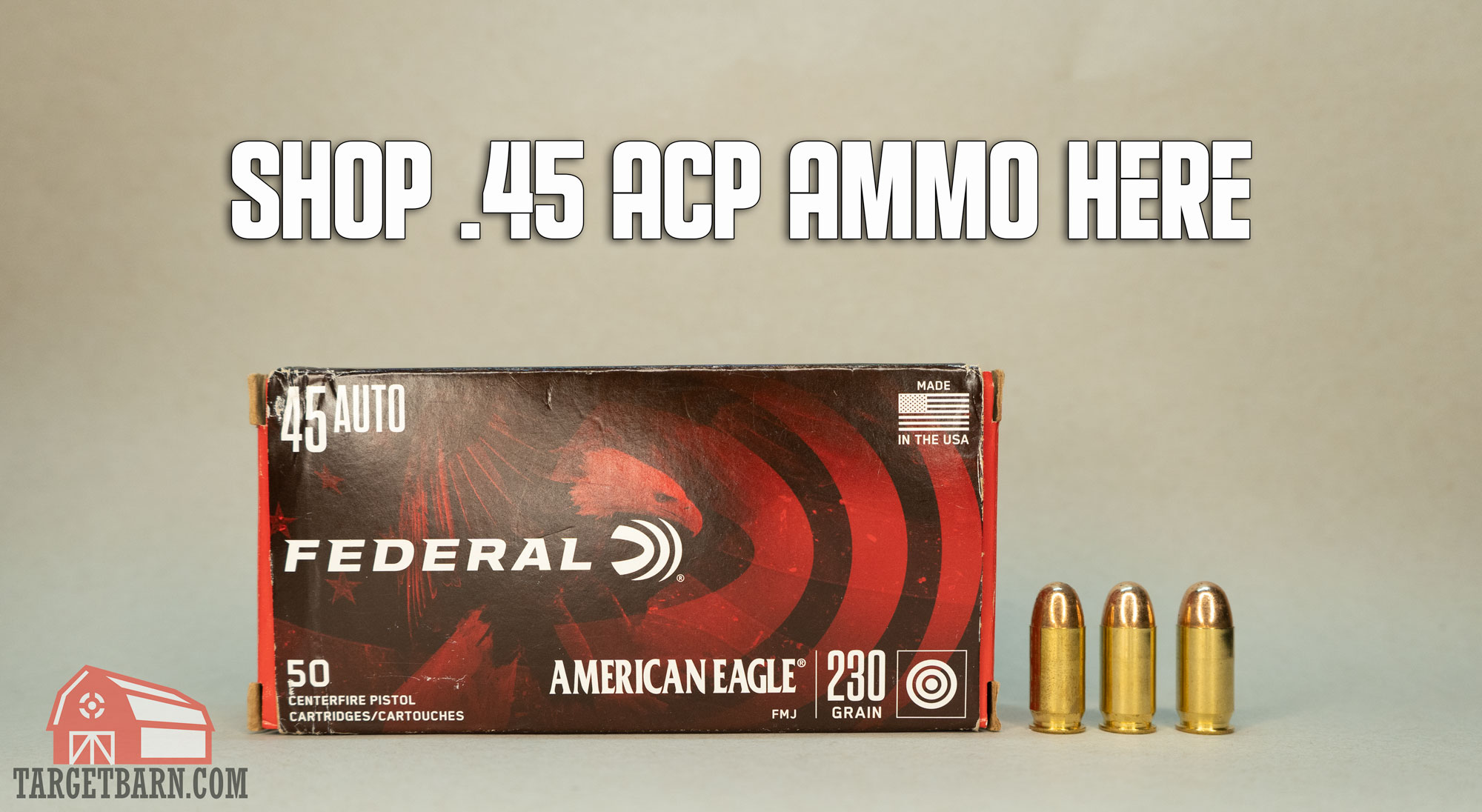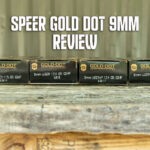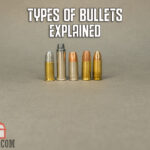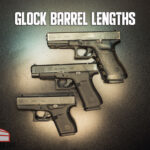If you’re considering purchasing your first handgun – or your hundredth handgun, since you are presumably American and therefore able to purchase as many handguns as you want – then you may have narrowed your choices down to two different pistols: the Glock, or the 1911.
There are many handguns to choose from, but Glocks and 1911s are both extremely popular – and for good reason. You’d do well to choose either, but that still begs the question: which?
The quick answer is:
Choose a Glock if you want:
- A higher magazine capacity
- To easily add a red dot optic
- No manual safeties (other than trigger safety)
- A double or single stack pistol
- A more lightweight, polymer pistol
Choose a 1911 if you want:
- A light and crisp trigger pull
- To carry cocked and locked – i.e. round in chamber with cocked hammer and thumb safety engaged
- 7 to 8 rounds of .45ACP (though other calibers are available)
- A single stack pistol
- A heavier, steel-frame pistol
Keep reading as we go more in depth on the Glock vs. 1911.
Glock vs. 1911 Quick Facts
- Glock is a handgun manufacturer that produces over 50 different pistol models and came to prominence in the early 1980s
- A 1911 is a pistol design conceived by gun designer John Browning and manufactured by Colt in 1911 that served as our military’s primary sidearm for several decades
- Glocks are polymer-framed, striker fired pistols; 1911s are steel-framed single-action pistols
- The classic 1911 is chambered in .45ACP, but there are 1911s chambered in other calibers like .9mm, .40S&W, and .38 Super
- Glock produces pistols chambered in many calibers: .22LR, 9mm, .380ACP, .40S&W, .45 ACP, 10mm and more
Glock vs. 1911: Pistol Basics
First, let’s take a look at what exactly a Glock vs. 1911 is and their respective origins.
What Is a Glock?
A Glock is not a model of pistol. Glock is an Austrian handgun manufacturer that came to prominence in the early 1980s after it introduced the first commercially successful polymer-framed pistol. In addition to its light weight, the original Glock 17’s simple 36-part design made it extremely popular.
Today, Glock manufactures over 50 different pistols in a variety of sizes and chambered for many different types of ammunition including 9mm, 10mm, .380 ACP, .45 ACP, and even 22 LR. Glock’s G17, G19 and G26 pistols are all chambered for the highly popular 9mm cartridge. The G21, G30 and G41 pistols are chambered for .45 ACP; of these, the G21 is most popular.
What Is a 1911?
The M1911 was developed by John Browning, manufactured by Colt, and adopted by the U.S. Armed Forces in 1911. It was our military’s first semi-automatic pistol, and stayed in service from World War I until 1985 when it was replaced by the Beretta M9.
Only an M1911 is an M1911. But so long as its design adheres to the great Mr. Browning’s specifications, it can be a 1911. Many firearm manufacturers specialize in producing 1911-pattern pistols such as Rock Island Armory, Kimber and Dan Wesson. And while the M1911 is chambered for .45 ACP, a modern 1911 can be chambered for other cartridges such as 9mm, 10mm, .380 ACP, and even .22 LR. In other words, purchasing a 1911 does not obligate you to embrace the hallowed 45. There are several different 1911 sizes to choose from, The 1911 even inspired the creation of the modern 2011 pistol, which differs from the 1911 in several ways, including grip frame modularity.
Glock vs. 1911 Specifications
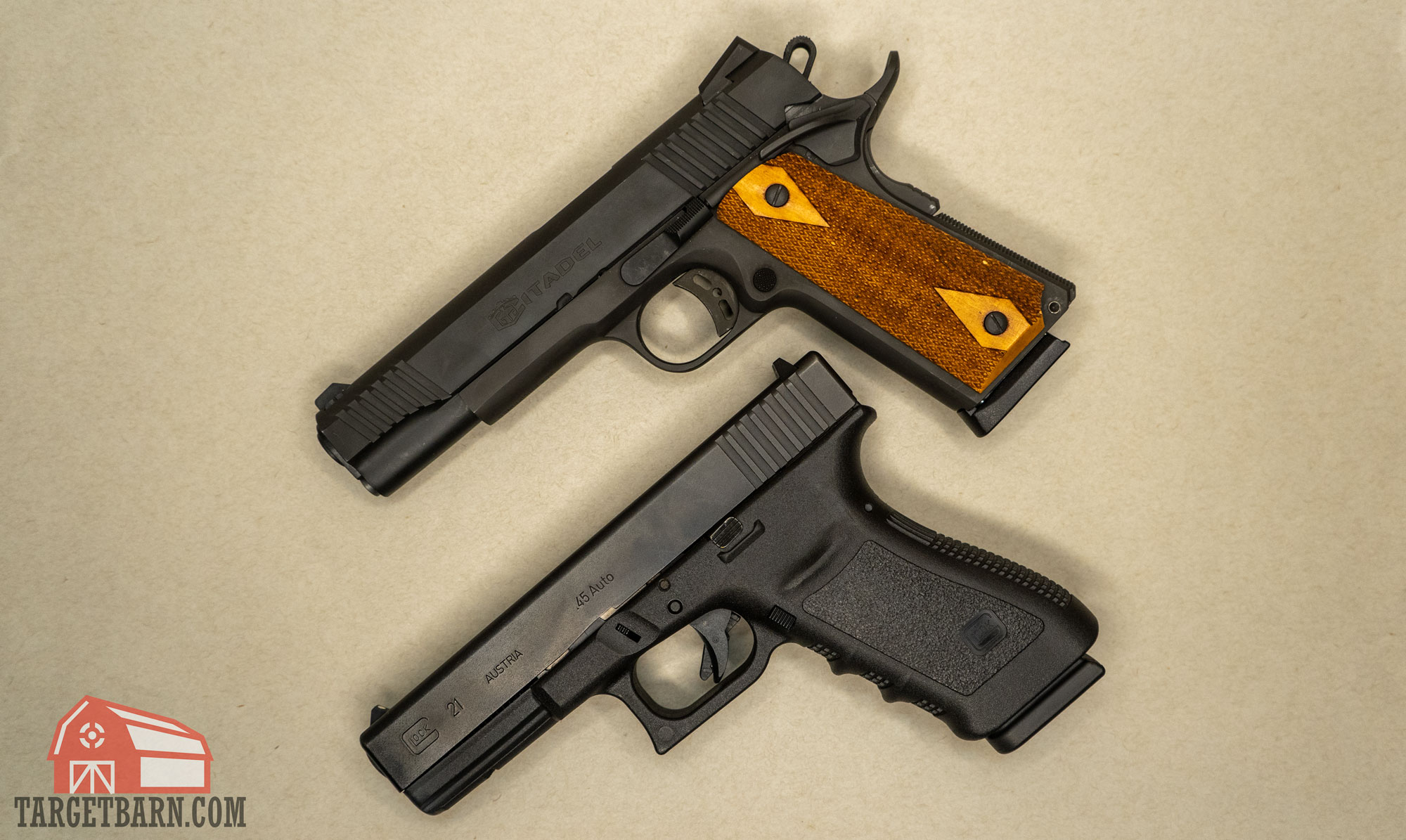
Obviously, it wouldn’t make much sense to compare a classic M1911 to a 357 SIG G32. Let’s simplify our comparison by starting out with two similar pistols: the Glock 21 Gen 4, which is chambered for .45 ACP, has a 4.61” barrel, and sells for about $550; and the Rock Island Armory TAC Standard FS, which is chambered for .45 ACP, has a 5” barrel, and sells for about $700.
Dimensions
| Model | Barrel Length | Overall Length | Width | Height |
|---|---|---|---|---|
| Glock G21 | 4.61" | 8.07" | 1.34" | 5.51" |
| RIA TAC 1911 | 5" | 8.74" | 1.3" | 5.5" |
As you can see, the G21 is a slightly smaller firearm. Its barrel, which is shorter by 0.39”, certainly contributes to that fact.
Right away we see the first of many challenges that arise when we try to compare these two pistols. The original M1911’s dimensions are 8.25” L x 1” W x 5.5” H, although many other configurations of 1911 are now available. You could get an officer frame 1911, which is 4.8” tall and has a barrel length of 3” or 3.5”, if you want a truly compact pistol for everyday carry. Likewise, a subcompact .45 ACP G30 has dimensions of just 6.97” L x 1.38” W x 4.8” H.
Ultimately, a 1911 can be larger than a Glock pistol, and vice versa.
Weight
A TAC weighs only 2.7 lb unloaded. A G21 is lighter still at 1.83 lb unloaded. That illustrates an advantage of choosing a pistol with a polymer frame instead of one that is made of 4140 ordnance steel.
You aren’t obligated to get a steel-framed 1911. An American Tactical Polymer FHX45 1911 is featherweight at just 1.72 lb. Of course, the subcompact G30 is even lighter at 1.49 lb. In other words, a Glock pistol may be the lighter choice for everyday carry, but not necessarily.
Capacity
1911 pistols typically have 7- or 8-round magazines. The 1911 is designed to be carried with one round in the chamber with the thumb safety engaged, so you are able to carry 8 or 9 rounds total depending on the magazine.
The G21 has that beat thanks to its standard 13-round magazine. There are different Glock ammo capacities depending on the model, but nearly all models have the 1911 beat. This is a legitimate reason to prefer a Glock over a 1911: more rounds in the magazine equal greater assurance that you’ll be able to defend yourself. You must never assume you’re going to hit the threat every time you fire – and even if you do land a shot, there is no guarantee it will produce the desired effect.
Action
An important difference between the Glock vs. 1911 is the action of each pistol. The Glock is a striker-fired pistol while the 1911 is a single-action pistol.
When a shooter racks the slide of a striker-fired Glock to chamber a round, an internal spring is partially cocked. Pulling the trigger cocks the spring the remaining distance, which causes the striker pin to hit the cartridge to fire the round.
In a single-action pistol like a 1911, the shooter must cock the pistol’s hammer in order to fire a round. Pulling the trigger drops the hammer onto the firing pin which then ignites the round.
Reliability
Is the 1911 reliable? Absolutely. As of the 1980s, the U.S. military was still using M1911s that were produced as recently as 1945. Although it was designed to withstand the coarse conditions of battlefields, an original M1911 may be a touch finicky about firing ammo other than .45 ACP ball (230 grain FMJ, ~820 fps muzzle velocity). Fortunately, modern 1911s aren’t nearly as selective. However, there are many different 1911 manufacturers and not all produce quality pistols. You’ll find that some 1911s are pickier about ammo than others.
As for the Glock pistol, it too is famously reliable. Earlier models chambered for .40 S&W were known to encounter certain issues, but that problem has since been engineered out of existence by Glock. Police officers abuse the absolute bejeebers out of their Glock handguns in their lines of duty and seldom encounter problems. Really, you couldn’t ask for two more reliable pistols to compare against one another.
Handling
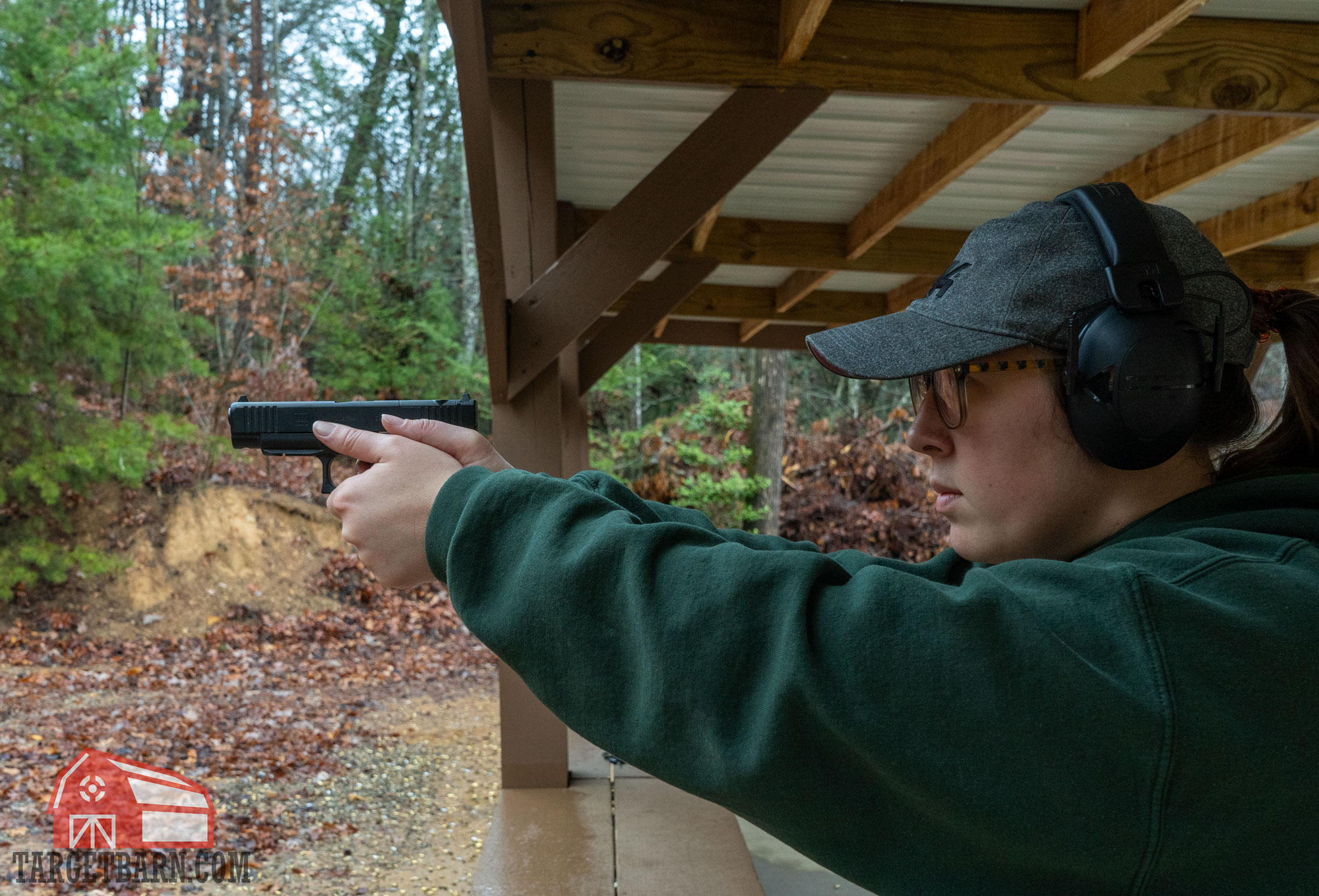
The 1911’s single action trigger, intuitive grip angle, crisp trigger pull (4-6 lb) and slim profile (which it owes to its lower-capacity single stack magazine) have won it a lot of fans. Some people dislike the 1911’s manual safety (which is required by its design), but not so much that they would categorically pooh-pooh it outright.
A Glock is hardly difficult to handle by comparison. Its grips fit quite comfortably in the hand, and its lack of an external manual safety promotes even greater convenience (we personally like the Glock’s Safe Action trigger system, although some shooters disparage it all the same). That said, many people dislike the Glock’s trigger itself (5.39 lb pull for G21 and other full-size models; 6.29 lb pull for compact models). The most common criticism is that it feels “spongy.” And while Glock pistols with single stack magazines are available, the G21’s double stack magazine does necessitate a wider grip that may not comfortably accommodate smaller hands.
When two handguns are chambered for the same cartridge, the lighter one necessarily has more powerful recoil. Although it is more comfortable to carry a lighter Glock, its higher recoil is accompanied by sharper muzzle flip – the latter of which increases the amount of time the shooter must spend restoring their aim on target after firing each shot. However, the 1911 doesn’t always have lighter recoil than a Glock. There are many factors that affect recoil including caliber, grip, and ammo load.
One of the biggest complaints about Glock pistols is their sights. They are relatively fragile – not certain to break under normal wear and tear, but still very capable of doing so. But like the Glock’s often maligned trigger, replacing its sights is simple enough. Get a nice set of Trijicon sights and you’ll be all set.
If you want to put a pistol red dot on your handgun, it’s easiest with a Glock. You can either buy a Glock that already has optic cuts on the slide, buy an aftermarket slide with optic cuts, or send off your slide to have it milled for an optic. It’s a little harder to mount an optic with a 1911. Most 1911s don’t come with an optic cut. Some manufacturers are now offering them, but you’ll likely have to go aftermarket to put a dot on your 1911.
Aesthetics
To be sure, a pistol’s appearance ultimately has no bearing on its utility for self-defense. But once you look past that, the 1911 is easier on the eyes by far. It’s a classic piece of American engineering: built to endure hardship and look great the whole time it’s doing it. When a 1911 wears a pair of handsome cocobolo grips, it’s a work of art.
We would never call the Glock “ugly,” yet its appearance is far more utilitarian by comparison. It’s a boxy little number, and usually solid black unless its owner has parkerized or Cerakoted it.
Glock vs. 1911: The Takeaway
We’ll confess to comparing apples to oranges on this one. When you get right down to it, comparing dozens of different manufacturers’ 1911 pistols to Glock – which is a firearm manufacturer, and not a specific model in and of itself – is a nebulous exercise at best.
Ultimately, the better pistol is the one you prefer firing. Full stop. Get out to the range, give a 1911 and a Glock pistol a college try, and see which one is more agreeable to your sensibilities. You may just choose to carry a S&W Shield instead.



